While the province of Phatthalung doesn’t border the sea, it still has plenty of water thanks to Songkhla Lake. As Thailand’s largest lake, it takes up much of the province’s eastern border. Songkhla provides a coastline of sorts, with Phatthalung overlooking a freshwater expanse dotted with watercraft and distinctive Yok Yor fishing nets.
With such a large body of water close by, Phatthalung’s way of life is tied to the lake. When you visit, you’ll experience life as its people do: exploring their livelihoods, sampling their handicrafts, and enjoying a culture that moves to the rhythms of the waters and the seasons.

Birds, Lilies and Village Life at Thale Noi
The fishermen and farmers living in the village of Ban Thale Noi, found at the edge of the Thale Noi Waterfowl Reserve, can teach you a few things about living off of nature.
Their daily activities are little changed from that of their ancestors’. Fishermen raise and lower the square-rigged nets called Yok Yor to catch freshwater fish and farmers leading their water buffaloes to the shallows. Other community members harvest the local sedge called krajood, for their wives to weave into baskets, bags, and mats.
Visitors to Thale Noi can see different dimensions of the lake depending on the time of year they visit. In the colder months from October to March, over 43,000 migratory birds alight in Thale Noi – covering 180-odd species including purple herons, little grebes, and cormorants. As the temperatures heat up between March and April, pink water lilies bloom in parts of Thale Noi as far as the eye can see.
To see these sights up close, visit the Thale Noi Wildlife Conservation Development and Extension Station where tourist boats can be hired for $14 (1.5 hours) or $24 (2.5 hours).
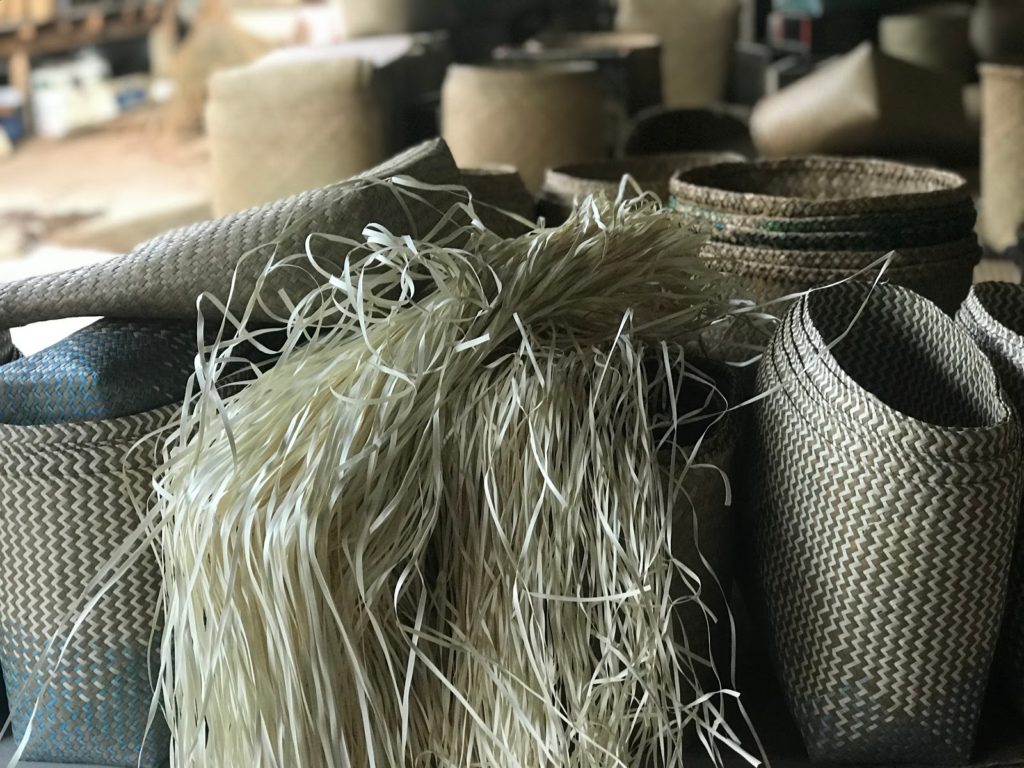
While most local crafts take a lifetime to master, the art of weaving krajood can at least be attempted at Varni Craft (Google Maps), an arts and crafts center in Ban Thale Noi. The center manufactures high-end krajood goods for export while giving tourists an inside look at the process.
Guests at Varni Craft can decorate their own krajood bag (for a fee), or arrange to stay overnight at the attached homestay.
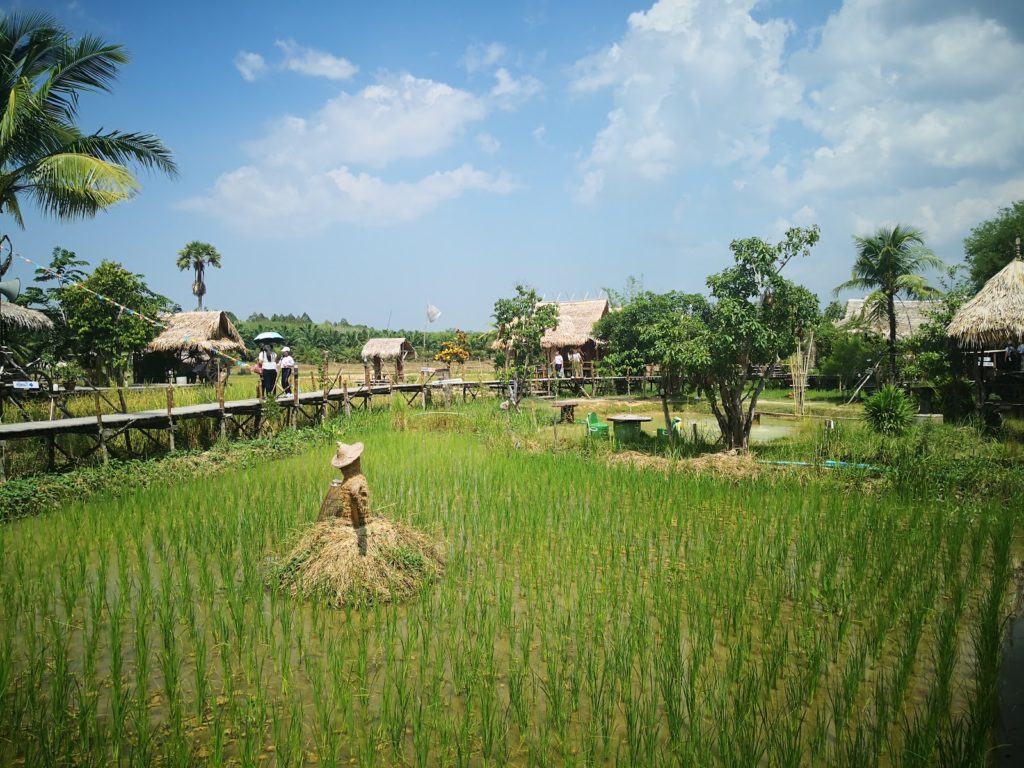
Phatthalung’s Markets and Hands-On Experiences
Phatthalung folks are proud of living off the land — and they’re always happy for an excuse to get tourists in on the action, too.
At Napokae Learning Center (Google Maps), visitors can learn about Phatthalung’s rice and unique rice-growing traditions then try the trade for themselves. Guests can get hands-on experience steering water buffaloes as they plow a rice field, planting rice by hand, and more.
Napokae Learning Center is open daily from 8am to 6:30pm, with free admission.
On Saturdays, Pa Phai Sang Suk Market rocks an organic and home-made vibe: this “happy market” is set in a bamboo grove and prides itself on its low-residue, all-natural-packaging ethos.
Instead of styrofoam and plastic, the market’s stalls use renewable materials like banana-leaf plates, coconut-shell utensils, and bamboo drinking cups. Some 200 vendors occupy the market selling local crafts, Southern Thai desserts, and street food. The market is open every Saturday, from 8am to 3pm.
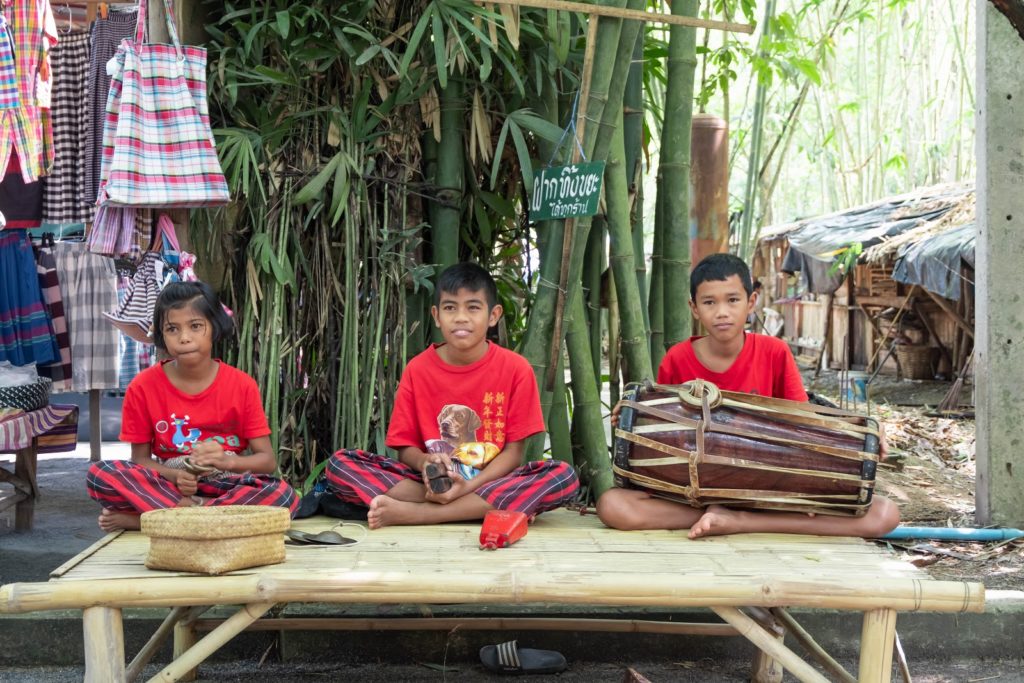
Then there’s Ban Khok Wua Handicraft, the “Coconut Shell Handicraft Village” in Chai Buri that pushes the envelope on crafting.
The community can make almost anything out of a coconut shell: water bowls, coffee cups, ladles, even lamps. Beyond coconut products, the local craftspeople also create pottery and other items from the locally-available red clay. What you don’t buy on the spot, they’ll sell to their numerous international export clients.
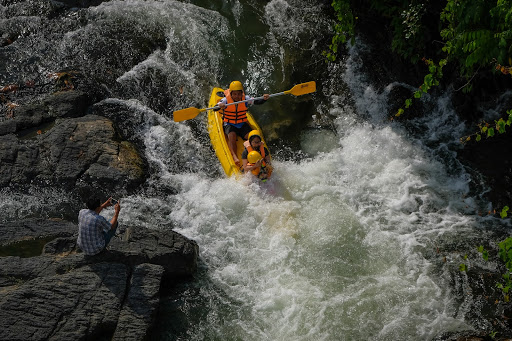
White-Water Rafting at Nan Mot Daeng
Is pottery too laid back for you? Don’t worry, Phatthalung also knows how to get your adrenaline pumping.
Whitewater kayaking from Nan Mot Daeng in Phatthalung’s Pa Phayom District is quite the adventure. It takes some four hours to cover the 6.5 km length of the river but you’ll remember every moment. Rafters take on a succession of 40 rapids ranging in difficulty from Classes I to III.
The strong currents along the river route can make it difficult for a kayaker to get through without flipping once. As you bounce with the current, you’ll also marvel at the natural splendor of the landscape, with shaded banks and the chirping of local birds still audible over the gurgling of the rapids.
An herbal steam room awaits at the end of the ride: the ideal rest after a few hours spent fighting the current.
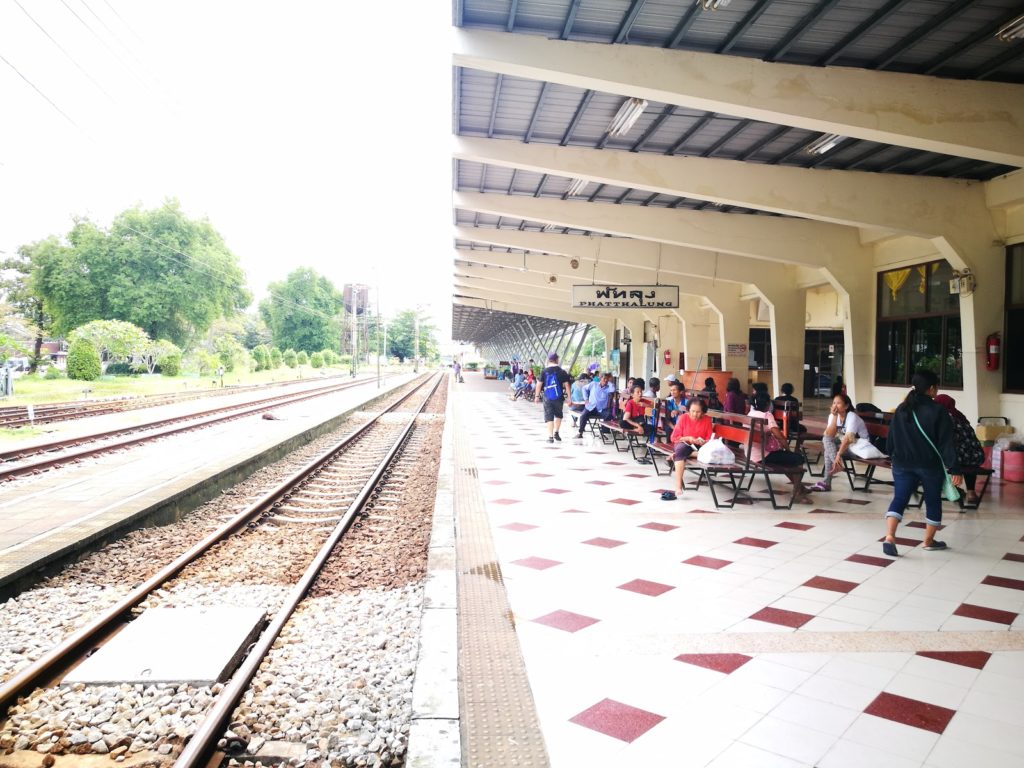
How to Get to Phatthalung, Best Time to Visit
Taking the train is the most convenient way to get to Phatthalung proper, as the station is located downtown and close to the hotels. Departure times for Bangkok trains to Phatthalung are 1PM, 2:45PM, 3:10PM, 3:35PM, and 10:50PM. Fares can range from $7.50 for a third-class hard seat to at least $18 for a first-class sleeper.
Buses to Phatthalung from Bangkok stop at both the South (Sai Tai Mai) and North (Mo Chit) stations, taking 13 hours to make their way to Phatthalung Station. Tickets can cost from $18 to $32, depending on the class of seat you buy.
Try to time your visit to Phatthalung with Thale Noi’s pink lotus season from February to May; the wetlands will be covered with lotuses when you visit. The cooler months from October to March are ideal for bird-watching in the same area.
Where to Stay in Phatthalung
Many Phatthalung hotels can be found right as you exit the train station. If you’d prefer to experience life closer to nature, you’ll be better off staying at a hotel like the Sri Pakpra or resort like the Lampam Resort or even a homestay near Ban Thale Noi — some are set right on the water itself!


